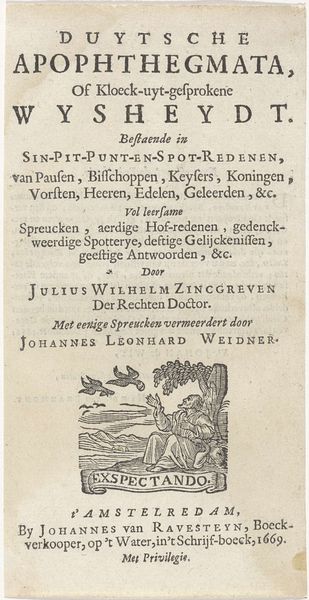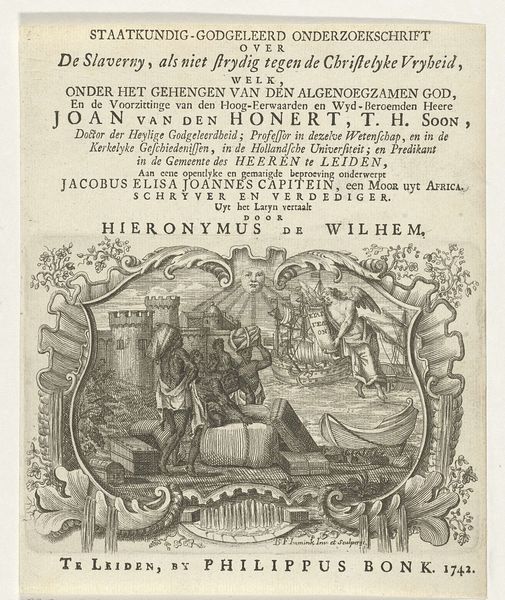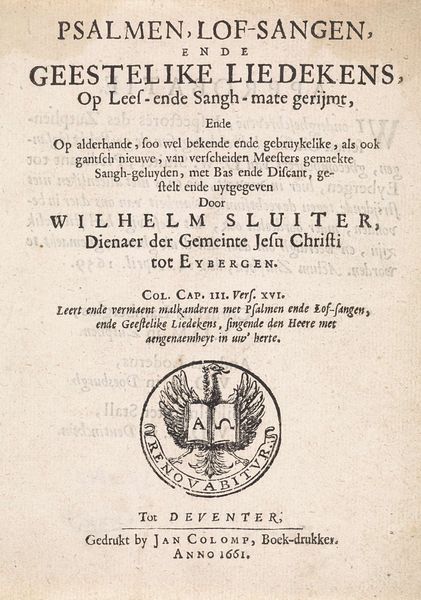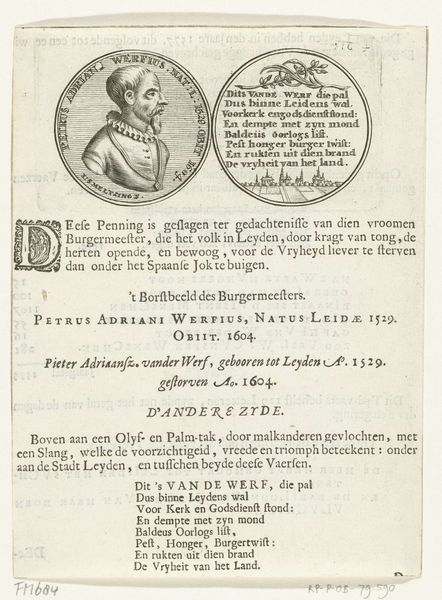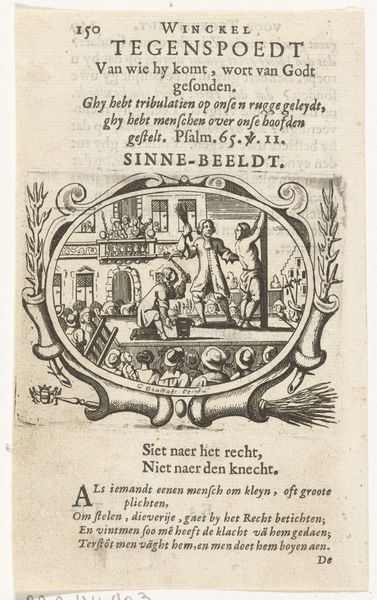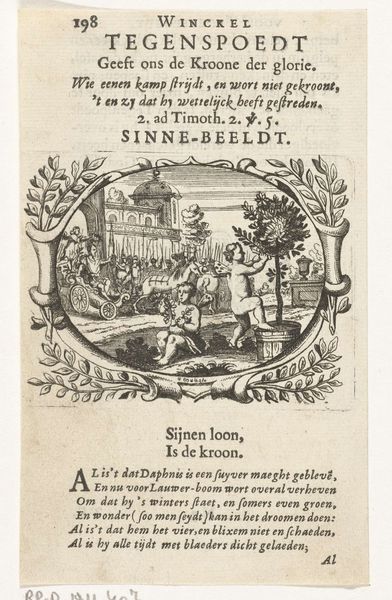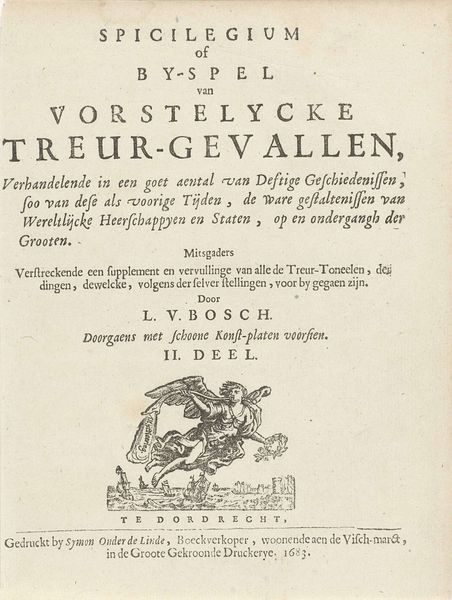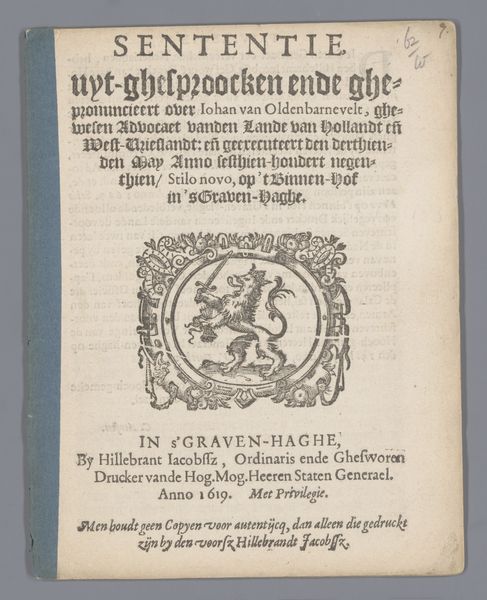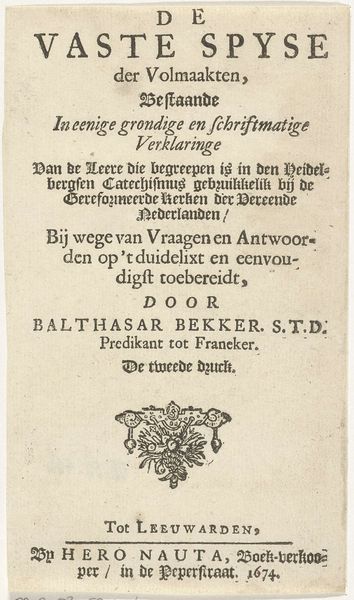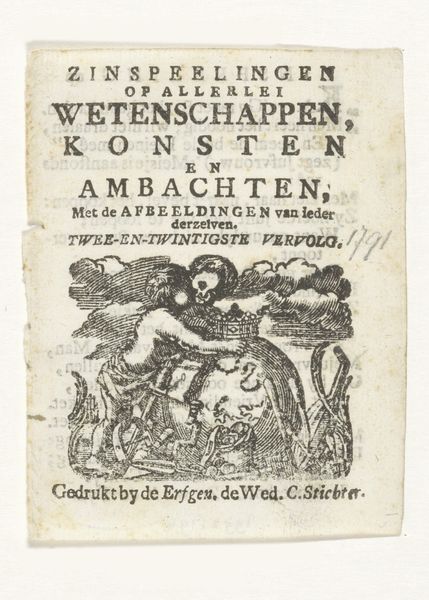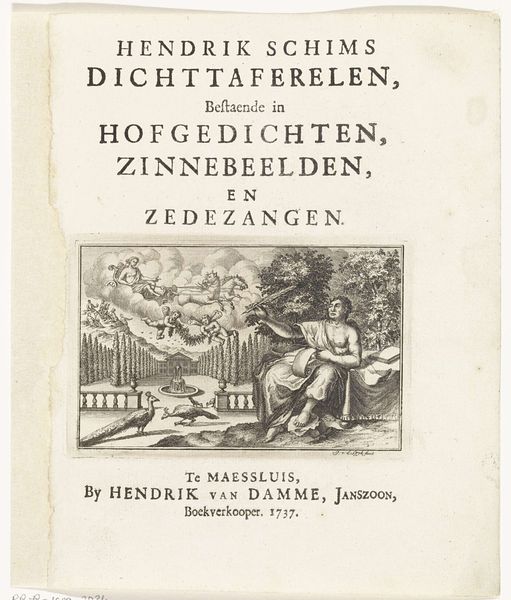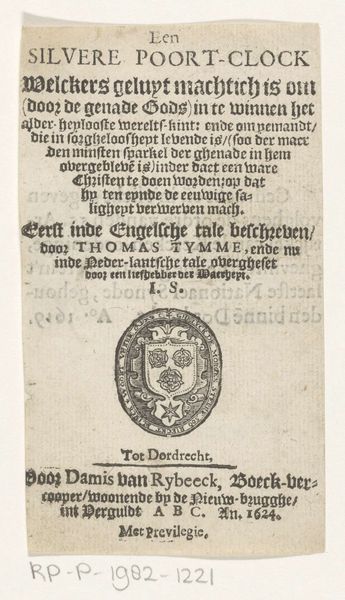
Keerzijde van een penning met een allegorische voorstelling van de dood van de gebroeders De Witt, 1672 1672 - 1699
0:00
0:00
anonymous
Rijksmuseum
graphic-art, print, etching, engraving
#
graphic-art
#
allegory
#
narrative-art
#
baroque
# print
#
etching
#
text
#
history-painting
#
engraving
Dimensions: height 136 mm, width 80 mm
Copyright: Rijks Museum: Open Domain
Curator: Let’s consider this engraving held here at the Rijksmuseum, its title translating to "Reverse of a medal with an allegorical representation of the death of the De Witt brothers, 1672.” It's attributed to an anonymous artist and was created sometime between 1672 and 1699. Editor: It strikes me as intensely chaotic. A swirl of bodies, both human and animal, all crammed into this circular frame. There's a violence hinted at, especially given the historical context you just set. Curator: The print is definitely an allegorical depiction of a grim moment in Dutch history, showcasing the brutal assassination of Johan and Cornelis de Witt. The text below, written in early modern Dutch, details “beastly fury”. Medals like this functioned as a form of political commentary. Editor: Yes, there's so much going on within that small space; I’m interested in the symbolism employed to convey such intense emotions regarding their death. It almost looks like something from mythology, perhaps with that cluster of creatures. Curator: The men, seemingly helpless, are overwhelmed by the "veelhoofdig beest" – the multi-headed beast - representing the chaotic, enraged populace. Editor: And those inscriptions encircling the central image… are those Latin? How would that have functioned for a broader public? Curator: Precisely! Latin phrases offer layers of meaning, indicating this medal wasn't intended solely for mass consumption, but also to appeal to learned audiences capable of deciphering these classical allusions and appreciating their gravity within a broader humanist tradition. It would elevate the narrative above mere populist sentiment. Editor: So it serves as both visceral propaganda and sophisticated historical commentary. The juxtaposition is fascinating! Looking at this now makes me want to examine Dutch societal power dynamics of the period more broadly. It feels charged with contemporary resonance around state violence. Curator: Indeed, and hopefully it reminds us that even seemingly small historical artifacts like this print offer powerful lenses for exploring complex socio-political histories and for reflecting on the visual strategies used to shape public perception.
Comments
No comments
Be the first to comment and join the conversation on the ultimate creative platform.
